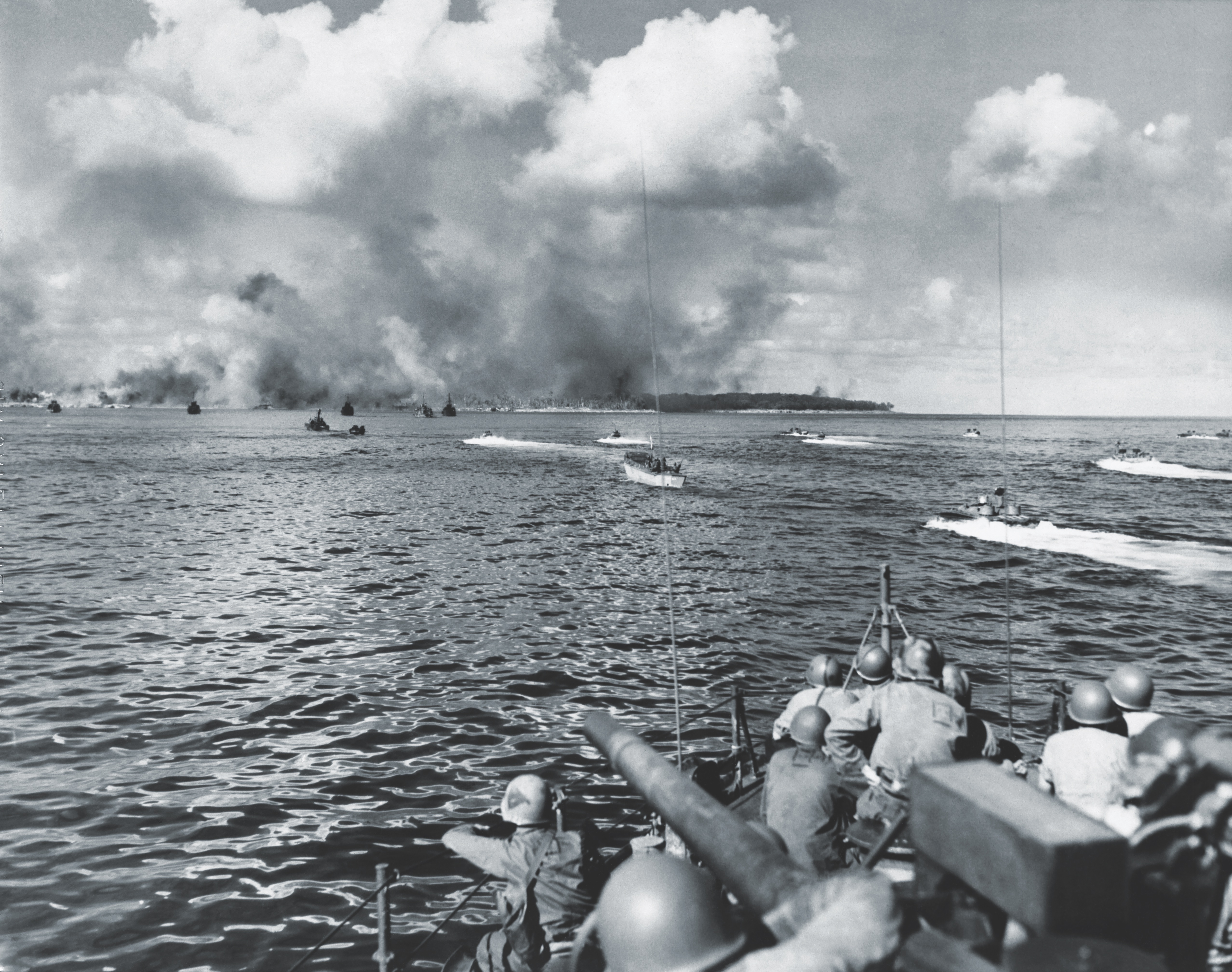IN THE FALL of 1944, American strategists decided to seize a foothold in the western Pacific’s Palau Islands, where Japanese air bases were considered a threat to General Douglas MacArthur’s plans to liberate the Philippines. Although Japanese naval aviation had been almost completely destroyed in June 1944, when the Imperial Navy took on Admiral Raymond Spruance’s powerful Fifth Fleet in the Battle of the Philippine Sea, American commanders still feared that Palau-based Japanese aircraft could savage the vast armada of troopships, landing craft, and warships slated to carry MacArthur’s divisions to the Philippines. Ultimately, these concerns would lead to some of the most tragic and wasteful fighting of the entire Pacific War.
Located about 700 miles southeast of Leyte, the Palaus stretch in a loose chain through some 100 miles of deep Pacific Ocean. Both MacArthur and Admiral Chester Nimitz, who led rival theater commands in the war against Japan, agreed on the necessity of seizing air bases there to support MacArthur’s return to the Philippines. This remained true even when Admiral William Halsey, commander of the Third Fleet, strongly recommended bypassing the Palaus after multiple airstrikes on the islands revealed that land-based Japanese aircraft posed little threat to MacArthur’s plans. For reasons he never explained, Nimitz elected to carry on with the original strategy. For this purpose, he chose Major General Roy Geiger’s III Amphibious Corps, composed of the 1st Marine Division and the U.S. Army’s 81st Infantry Division, to carry out the invasions—an operation ominously dubbed “Stalemate.”
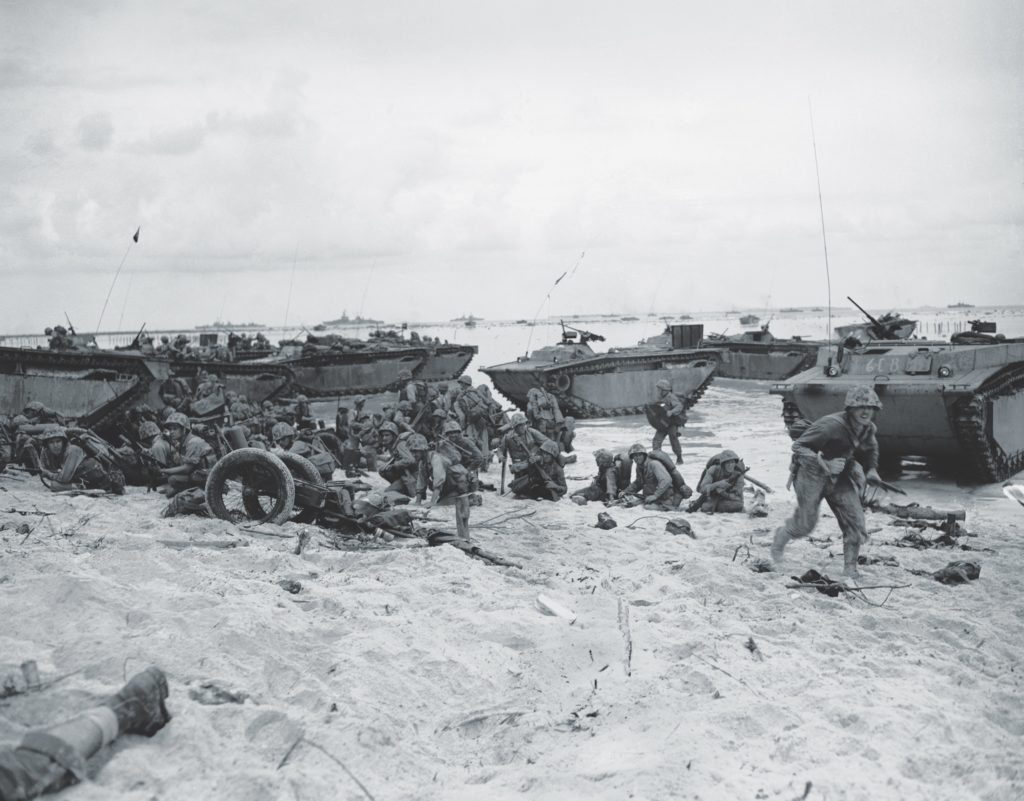
THE AMERICANS CHOSE to bypass the two largest and most heavily defended islands in the Palau archipelago, Babelthaup and Koror. Instead, they targeted Peleliu, home to a well-developed airfield the Japanese had built to accommodate fighters and medium bombers. American planners also selected Angaur, a diminutive limestone and coral island six miles to the south, as a secondary objective, where they hoped to develop an airfield capable of accommodating B-24 bombers. Geiger’s priority, then, was to take Peleliu. If need be, he intended to deploy both divisions for that purpose. Ideally, though, he hoped to use one division to capture Peleliu and the other to seize Angaur.
For the Peleliu assault, Geiger chose the 1st Marine Division, one of the finest combat units in the entire American armed forces. Nicknamed the “Old Breed,” the division had earned legendary status by fighting the Japanese to a standstill at Guadalcanal and subsequently enduring terrible conditions at Cape Gloucester on New Britain to secure an airfield that helped strangle Rabaul. Regretfully, though, they could not escape the harmful byproducts of poor senior leadership. The division commander, 54-year-old Major General William Rupertus, had performed well enough in the number-two job at Guadalcanal, but he possessed few qualities necessary to succeed in command. Taciturn, aloof, moody, close-minded, fiercely contemptuous of the army, and prone to bouts of melancholy, Rupertus hardly fit the high standard of leadership that such outstanding combat troops deserved. “[He] was a very opinionated, difficult man to serve with and for,” his personnel officer, Lieutenant Colonel Harold Deakin, later commented.
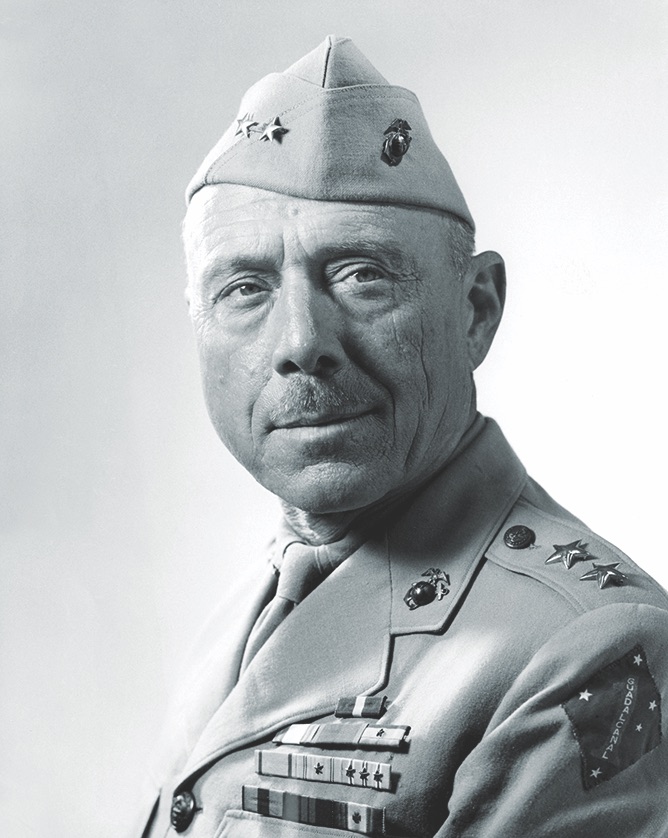
Before the invasion, Rupertus made the terrible mistake of predicting in a division-wide pronouncement that the capture of Peleliu would take only three days. During a training exercise, he broke his ankle, severely restricting his mobility, but concealed the injury from Geiger, who upon finding out later, said he would have relieved Rupertus of command for medical reasons had he known. Rupertus did not see himself as a member of a larger inter-service team. He kept the 81st Infantry Division at arm’s length during the planning phase, as he saw no meaningful role on Peleliu for the army.
Nicknamed the “Fighting Wildcats,” the 81st Division had trained for nearly two years at army posts around the U.S. and in Hawaii to prepare for its first taste of combat. Its commander was Major General Paul Mueller, 52, a Missourian who had led a battalion on the western front in World War I and earned a Silver Star for bravery. Thoughtful and glib, blessed with good writing skills, Mueller had served as editor of Infantry Journal and graduated from both the Command and General Staff College and the Army War College.
Under Geiger’s III Amphibious Corps plan, the 81st was to remain aboard ship while the entire 1st Marine Division invaded Peleliu on September 15. If the situation called for reinforcements by the next day, Mueller would send in troops from the 81st. Otherwise, the plan called for him to land his 321st and 322nd Infantry Regiments on Angaur, while his 323rd Infantry Regiment remained afloat in reserve.
From the first moment of the Peleliu invasion, the Marines encountered powerful resistance. The Japanese commander on the island, 46-year-old Colonel Kunio Nakagawa, devoted his garrison of nearly 11,000 troops to a brilliantly conceived layered defense. He held no illusions about the mortal seriousness of his mission. Before deploying to the Palaus, he told his wife, “I am training for eternity.”
On the day of the invasion, Nakagawa’s defenders fiercely resisted, attempting in three unsuccessful counterattacks to push the Marines into the sea. Though the 1st Marine Division prevailed and seized a beachhead about 3,000 yards deep, it suffered 1,300 casualties on that day alone.
The toll was so terrible that the Wildcats, waiting aboard their ships for news, saw grim evidence of the battle the Marines were fighting. “Looking out, we could see bodies floating,” Private First Class Ed Frazer, an artilleryman, sadly recounted years later: “bodies of dead Marines.”
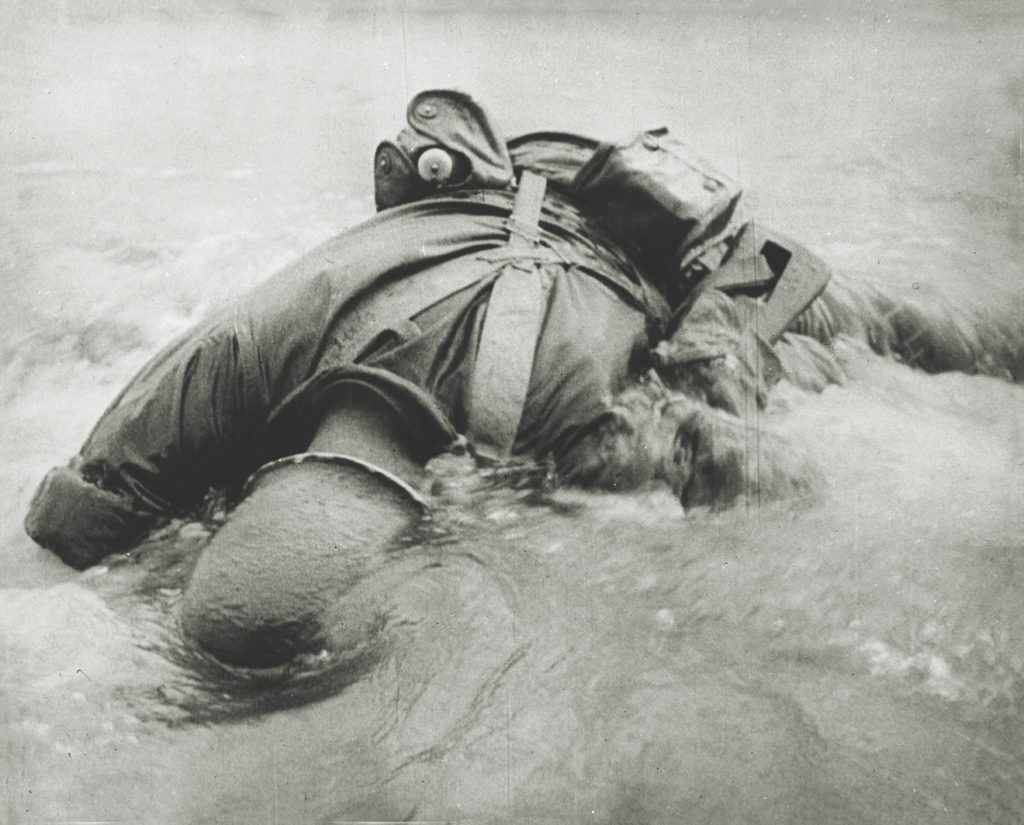
Despite these ominous undertones, a curious mood of triumphant inevitability prevailed, at least among the ships’ crewmen, who that evening prepared meals of steak and chicken followed by frozen strawberries as a special invasion-eve treat before an anticipated Angaur landing on the morrow. But the next day, September 16, nothing happened. With the costly Peleliu fighting continuing unabated and the intensity of the violence swelling by the hour, Geiger decided to play wait-and-see for a day. But Rupertus never considered asking for reinforcements—in effect implying that the situation ashore was in hand, with victory imminent.
In fact, the Marines were about to run into Nakagawa’s most difficult defenses, amid the high ground of seemingly endless ridges and caves overlooking the airfield. Nevertheless, taking his cue from Rupertus, Geiger authorized Mueller to invade Angaur on September 17—a fateful decision that deprived the Marines of air cover, naval gunfire, and reinforcements just when they would most need this support.
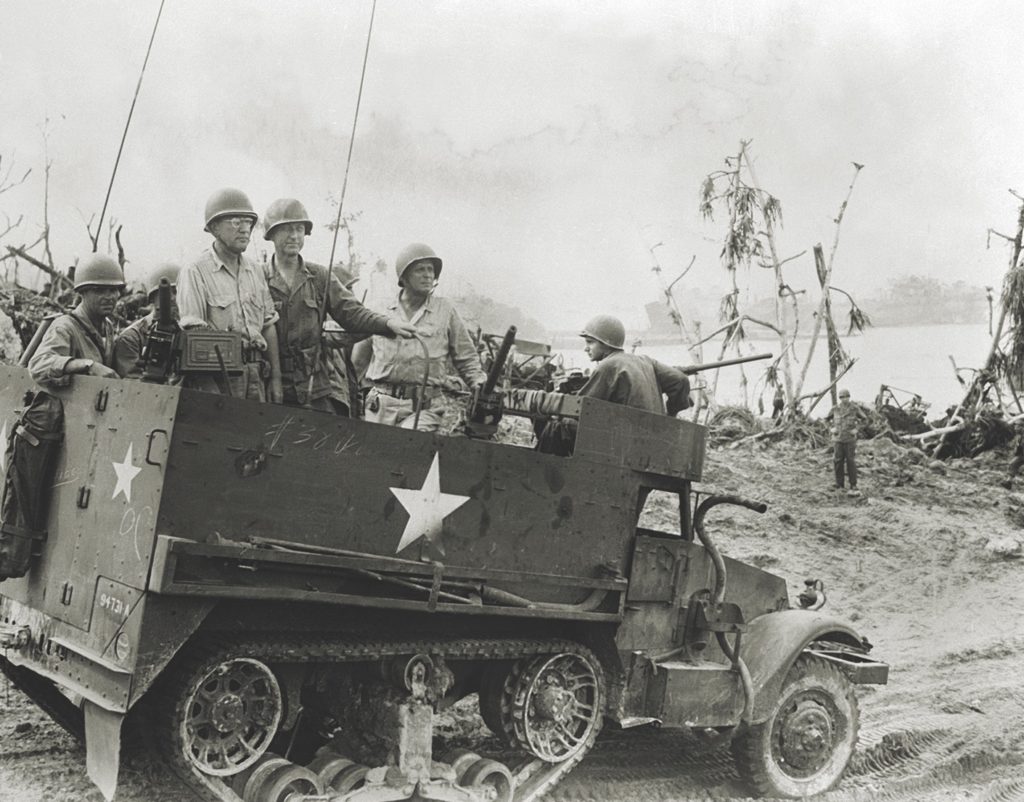
WITH THE 81ST DIVISION now nearing its combat baptism, the loquacious Mueller circulated a rapturous message to his men: “We are on the eve of seizing an important strategic area from the Japanese. On our shoulders rest grave responsibilities. What we do in this battle will be no small contribution to the glory of our country. To do the job we must cast off sentiment and restraint. To win this fight we must kill every Jap on the island except the ones we are sure are surrendering. That is the job! We are ready!”
The U.S. Navy had already spent parts of two days pounding Angaur with ordnance. Most dramatically, cruiser fire had toppled the island’s lighthouse like a heap of children’s blocks. Underwater Demolition Team 10, operating daily from the morning of September 14 on, reconnoitered Angaur’s coastline and found, in the stilted recollection of the unit after-action report, “no signs of underwater obstacles of any sort…in the area.” Beaches were sprinkled with a few obstacles consisting, according to one post-battle report, “of light angle iron or ½” steel cable from tree to tree.” On September 17, under cloudless skies, a powerful group of surface vessels, including one battleship, three cruisers, and four destroyers, bludgeoned the little island one last time.
“We hear the blast of the big guns and the ripping-silk sound of the heavy shells sailing to their targets,” war correspondent John Walker reported in Time magazine. “We see the warships with halos of yellow smoke and the bursts of fire and black smoke back of the beach.” Standing next to Walker, a baby-faced ensign muttered, “If I was a Jap in there and I wasn’t scared, I’d get scared now.” In the recollection of Private First Class William Somma, watching from aboard a landing craft heading inexorably ashore, “the island became a mass of smoke and fire.” Airstrikes from carrier planes and rocket salvos from specially equipped LCI gunboats, plus more-concentrated fire on the landing beaches from the cruisers and destroyers, topped off the bombardment. But the pre-invasion explosive bark was worse than its bite. “It seems probable it had little other effect beyond a small degree of confusing and limiting Japanese movement,” Major Nelson Drummond, a combat historian attached to the 81st Division, wrote a few months later.
The Japanese commander, Major Ushio Goto, had at his disposal only one reinforced infantry battalion, totaling about 1,600 men, to defend this three-square-mile island. Home to little more than a phosphate mine and teeming with jungle, hills, and caves, Angaur had no roads and no airfield. Goto’s troops hailed from the Imperial Army’s 59th Infantry Regiment, a hardened combat unit redeployed from Manchuria to the Palaus only a few months earlier. A coterie of a couple dozen artillery and antiaircraft guns, ranging in size from 37- to 75mm, plus 150mm mortars, mines, explosives, and barbed wire, augmented this light infantry force.
With limited manpower, Goto had no other option but to guess at the American landing site and fortify accordingly. He reasoned that the Americans would invade in the southeast, location of the most spacious, inviting beaches, and he invested the critical mass of his strength to hold them. Indeed, that part of Angaur teemed with such a vexing array of pillboxes, fortified bunkers, antitank guns, trench lines, rifle pits, and the like that General Mueller and his commanders noticed the buildup as they studied aerial reconnaissance photographs and chose to land on more constricted beaches to the north.
Mueller earmarked the 322nd to land at Red Beach on Angaur’s northeast coast while the 321st hit Blue Beach on the east coast, in a kind of pincer formation. At the same time, landing craft bearing soldiers from the 323rd feigned a landing on the island’s western expanse. The combination of firepower, amphibious power, and an intelligently planned flanking invasion negated any possibility of the Japanese halting the American landings, and both the 321st and 322nd got ashore against minimal opposition. Indeed, the Wildcats initially found themselves restricted more by the thick terrain and cratering from the naval bombardment than from Japanese resistance.
Having guessed incorrectly about American intentions, Goto recovered as best he could. He left a token force in southern Angaur and moved as many troops as possible to the north to counter the push inland, launching two feckless counterattacks that accomplished little besides costing him soldiers he could not replace.
By September 18, the two American beachheads had joined hands and, with armored support from the 710th Tank Battalion, begun moving westward. Inland from Blue Beach, bulldozers from the 1884th and 1887th Aviation Engineer Battalions were already clearing brush in preparation for constructing the airfield. With few Japanese in their way, the Americans knifed across the central portion of the island and secured the demolished phosphate plant, as well as the confusingly named village of Saipan Town, the only settlement of any size. The division historian vividly described a shattered landscape marked by “scattered machinery, narrow-gauge railroad cars, and steam and diesel locomotives. Most of the buildings were shambles. Debris was scattered throughout the area that had once provided a quiet, tropical life for Japanese overseers and natives engaged in the production of phosphate, the vital fertilizer product which was very essential for Japanese food production.”
In some instances, as the Americans picked through the ruins, they discovered die-hard Japanese soldiers determined to fight to the finish. Near the lighthouse and a splotch of high ground the Americans called Shrine Hill, Lieutenant Bob Guitteau’s platoon discovered a log-and-earth bunker. When his platoon sergeant tossed a white phosphorous grenade inside, the Japanese responded with desperation. “Out they came. The first guy was swinging a samurai sword.” The platoon sergeant parried the sword with his rifle, suffering a cut to the ear, as Guitteau opened fire. “I shot the sword bearer and then…went to a squatting position and fired away as the Japs came out of the bunker. My guys behind me were also firing.” They killed at least eight enemy soldiers. Others remained inside the bunker. A bulldozer drove up and sealed the bunker with mounds of dirt. Demolition teams exploded charges in an attempt to collapse the bunker or kill the Japanese by concussion. Still, the Americans heard grenade explosions as the trapped soldiers committed suicide. “This was pretty grim stuff the likes of which I had never come close to experiencing before,” Guitteau later reflected.
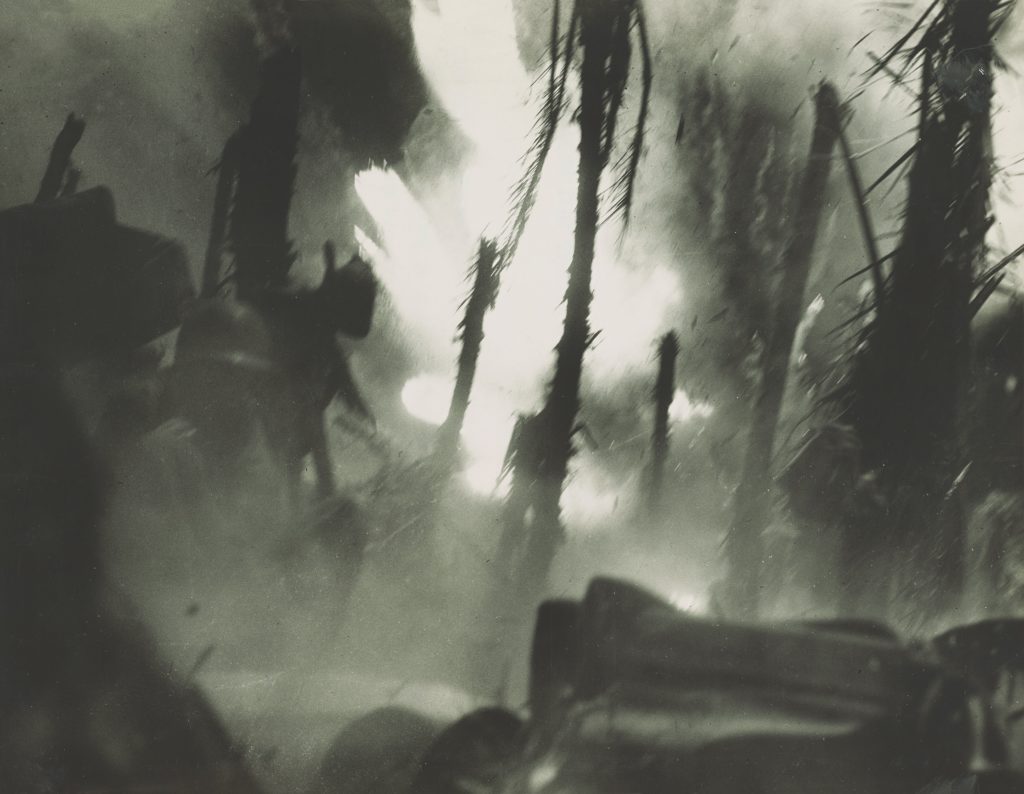
The majority of Goto’s troops, though, remained in fighting condition and determined to stymie the American advance. For the better part of three days, the two sides grappled with each other in a series of fierce engagements amid a baffling network of coral-reinforced pillboxes, bunkers, and trench lines inland from Red Beach. Uneven ground and thick jungle restricted mobility and provided hiding places for the Japanese, as enemy artillery and mortar fire inflicted casualties. With visibility severely limited, American machine gunners wielded their weapons from the hip and fired generous quantities of ammunition ahead of cautious riflemen, demolition teams, and flamethrower operators, who paced forward through thickets and bushes. “They encountered many pillboxes and dugouts,” Major Drummond wrote. “Each was attacked with flamethrowers and satchel charges on the general principle of shooting first and questioning Japanese presence later.”
Infantrymen sprinted or low-crawled forward as best they could, sometimes even stumbling intimately into the remnants of their enemies. “A Japanese soldier had been blown in half, legs to the right of me, torso and head on the left,” Private First Class Keith Axelson later said. “His body and head appeared to be standing in a foxhole. I was lying on his viscera, still connected to both body parts. Moving forward I saw another Japanese to my right lying face-up with flies in his eyes.”
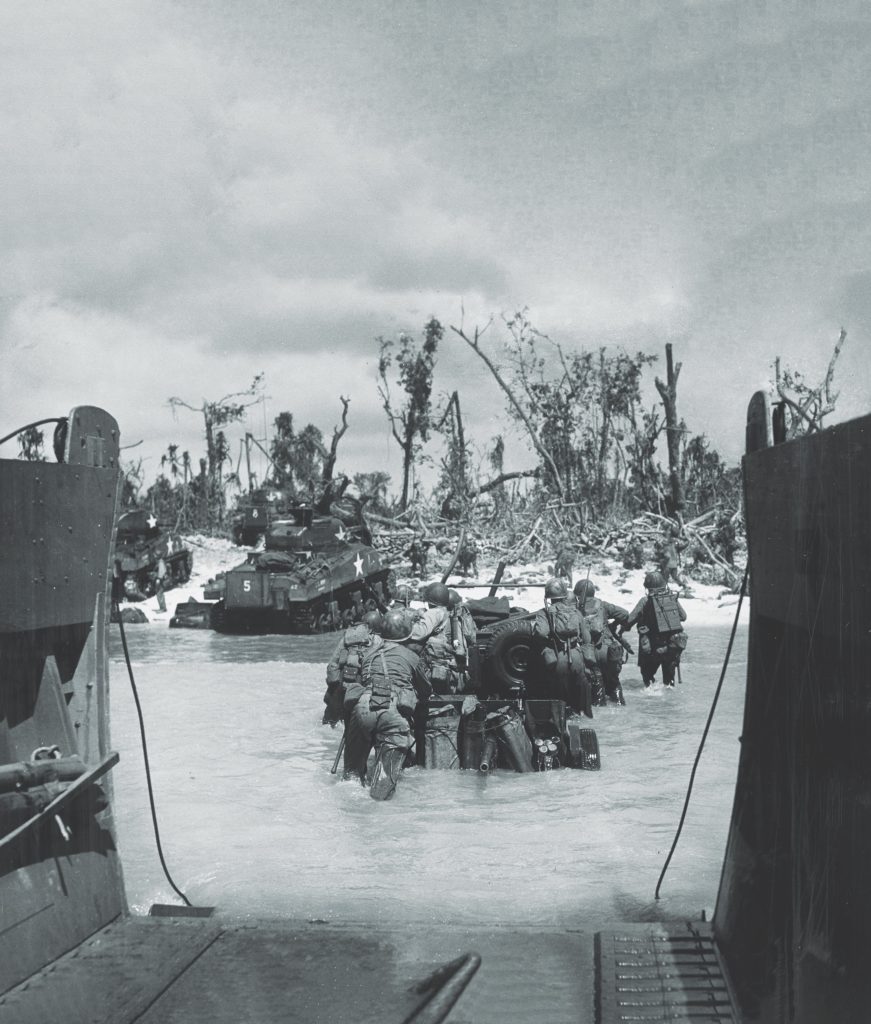
BY LATE MORNING on September 20, the Americans had taken all but the hilly, cave-pocked northwest sliver of the island. Mueller radioed corps headquarters: “All organized resistance ceased on Angaur at 1034. Island secured.” The general’s statement contained a curious mixture of falsehood and truth. It reflected an American tendency to shape a battle narrative—like some sort of martial three-act play—that later marked American operations in Vietnam and even survived into the 21st century.
Major Goto had lost about half of his command, but he remained alive and in full control of the survivors, whom he wisely hunkered into that sector’s ideal defensive terrain. Almost all of his men were united in their determination to fight to the death, so the Japanese major would have been surprised to hear Mueller’s contention that he and his charges were not organized.
The 81st Division commander was absolutely correct, though, that his troops had secured everything that actually mattered on Angaur. With the habitable part of the island under control, the engineers busily constructing an airfield for B-24s, and the Japanese powerless to reverse this, the Americans already had what they needed. In that sense, Mueller would have done well to believe his own message. Angaur was secure, at least in the ways that mattered most. Cornered into a remote area, confined largely to caves, the Japanese now posed little threat to the American presence beyond their capability of harassing them with small-caliber mortar, artillery, and small arms fire of limited range. American artillery, airstrikes, and patrols could easily contain these holdouts, while they grew inevitably weaker from starvation, thirst, and diminished morale. If they grew restive and decided to attack, then American firepower would destroy them. Far better to let them waste away in their fortified lairs than spend lives and time rooting them out one by one.
Instead, Mueller bought into the prevailing notion among American leaders that he must capture every last inch of ground and eradicate every last enemy soldier on a small island. “Initiate measures to make sure that not a single Jap is left unattended in your zone,” he instructed his regimental commanders. “Active steps will be taken to investigate all caves, dugouts, trees and other possible hiding places.”
American commanders favored the trite term “mopping up” to describe this pointlessness, as if soldiers were performing janitorial duties rather than engaging in deadly combat identical to what they had experienced in landing on and securing Angaur—the previous two acts of this self-structured play. Just as wasteful Japanese banzai attacks played into American strengths, so, too, did purposeless mopping up attacks in ideal defensive terrain negate those strengths, especially in relation to firepower. Instead of stepping back and rethinking the wisdom of venturing into the enemy’s daunting den, Mueller ordered the 322nd Infantry to clear the area, with his other two regiments in reserve.
In response, the 322nd’s popular commander, bald-headed Colonel Benjamin W. Venable, a graduate of Hampden Sydney College who had once befriended author F. Scott Fitzgerald when the two served together in the same regiment during World War I, raised a verbal caution flag: “The place is so honeycombed, I don’t see how we will ever get it cleaned out. Too many crevices, caves, protected passageways…some underground. [We will] never get all the snipers out.”
Heedless of Venable’s concerns, the attacks proceeded. Predictably, the Americans soon found themselves enmeshed in a bloody, tortuously slow death struggle amid an endless bramble of crags, caves, and ridges. Major Drummond, the combat historian, referred to the area as “a nightmare of deep fissures and vertical jagged crags, no five square feet on the same level.” The Japanese had already run low on food and water. Most understood that they were doomed, with no hope of relief.
But no matter how desperate, dispirited, or hungry, they proved themselves deadly adversaries in defending such ideal terrain. Spread among the numerous caves, and armed with little more than machine guns, rifles, grenades, knee mortars, and a few antitank guns, they held their fire until attackers came into close range, then inflicted maximum damage upon them. Visibility was generally limited to only a few yards. “The underbrush made it practically impossible to recognize caves until troops were actually upon them,” the division after-action report lamented. “Even after the foliage had been stripped away, it was not easy to distinguish between the opening of a cave and shadow cast by a ground projection upon…white coral rock.”
The Americans often blundered into their adversaries rather than spotting them. In one instance, a sergeant was attempting to cross a tangle of undergrowth on the trunk of a fallen tree when the trunk collapsed into a fighting hole occupied by a Japanese soldier. The frightened sergeant scrambled away. “He heard an explosion close behind but felt no ill effects,” one witness later recalled. “After considerable breathing space he cautiously investigated and found the Japanese had killed himself with a grenade.” Lieutenant Guitteau nearly had his head blown off as he directed the fire of a Sherman tank. As he stood talking with the tank commander on a phone affixed to the outside of the vehicle, “an armor piercing round hit the tank not more than 10 inches from my head. It carved a groove in the tank’s armor. I suspect the Jap gunner had me boresighted and when I dropped to the ground, he figured he got his man. I was scared half to death.”
Most Americans were not so lucky. The Japanese could hardly miss their targets at such close quarters. Snipers reaped a grisly harvest. “Since American soldiers are large in stature, it is easier for the sniper to get a good aim and inflict heavy losses,” a Japanese survivor told his American interrogators.
Concealed positions and smokeless gunpowder made Japanese riflemen difficult to see. “It was almost impossible to detect the firing position of the Jap sniper,” Captain Jerry Keaveney, a company commander, later wrote. “Even from close range, detection of the fire was seldom made.” Sergeant Lyle McCann arrived at one embattled spot only to find “one of my best friends dead, shot in the head.” Another sniper spotted Lieutenant James Rodgers and shot him through a lung. Though medics evacuated him, he died aboard ship. Company E of the 322nd Infantry lost at least four men, including two squad leaders, killed by sniper fire, most from head shots—an indication that all too often the Japanese enjoyed unhindered visibility and fields of fire. In a single day’s fighting, the regiment’s I Company lost every one of its officers, including the commander, Captain Gerard Marnell, who took a bullet to the chest and, just before dying, looked at his soldiers and said, “That’s all for me boys, so long.”
American fatalities piled up relentlessly. Private First Class Frederick Burtch walked up to a perfectly concealed machine gun that sprayed him at close range, killing him instantly. Private First Class John Bradshaw got hit as he attempted to negotiate his way forward over a rocky patch of nearly impassable jungle. Medics evacuated him to an aid station where he soon died. Private First Class Bird Walker went forward as a litter bearer and simply disappeared, never to be seen again.
Colonel Venable himself became a casualty as he observed the front-line action and directed an attack. As he took cover near a Sherman, several antitank rounds exploded, killing his radioman. Fragments tore into the colonel’s chest and left arm, nearly severing it. “I had ordered the troops into the attack in a dangerous location,” he later wrote. “My purpose in going forward was to let the troops see me. Unfortunately, the Japs saw me too.” Medics saved his arm and evacuated him off the island. Major Drummond called the loss of Colonel Venable a “heavy blow to the attack force. [He] was a deeply respected and warmly liked leader, who was close to his troops and in whom they had the greatest confidence.” Venable’s lesser esteemed executive officer, Lieutenant Colonel Ernest Wilson, assumed command of the regiment.
Heavy firepower had little effect on the well-ensconced enemy soldiers. The Americans pounded the area with airstrikes, naval gunfire, and artillery. The division’s artillery battalions hurled at the enemy over 20,000 rounds of 105mm high-explosive shells and nearly 5,000 rounds of 155mm artillery fire, to little purpose. “Artillery lost its effect against the type of terrain encountered in the northwest part of the island,” Brigadier General Rex Beasley, the division artillery commander, wrote in the unit after-action report. “The innumerable deep caves and crevices, usually facing away from the direction of the attack, afforded excellent protection from artillery fire. About all artillery could do was increase visibility by stripping foliage, keeping enemy personnel under cover, and affording great morale value to the infantry.”
The close-range fighting conformed almost precisely to the Japanese vision of inflicting maximum damage on the Americans. A Japanese battle status document sent to Imperial General Headquarters in Tokyo by Lieutenant General Sadae Inoue, the Imperial Army’s commander in the Palaus, claimed the defenders had “repulsed and [driven] back with heavy casualties” the American attacks. “The close-quarters combat carried out by our forces each night kept the enemy restless and on edge.”
Major Drummond, the historian who observed this fighting firsthand, later commented that it occurred “so close and under such terrain conditions that the division’s great superiority in heavy support fire was of little use. Automatic weapons and, above all, the individual infantryman with rifle and grenade carried the battle.”
It took weeks of brutal fighting for the 81st Division to subdue the entire area. By the first week of October, with the Japanese cordoned into a space a few hundred yards in width and depth, General Mueller finally scaled down the pace of the attacks, though he did not end them altogether. Engineers strung barbed wire around the cordon to prevent the Japanese from escaping. Patrols and demolition teams carefully scouted caves and fought intimate battles to the death with anyone they found inside. The Americans wisely began to bait the Japanese from their hideouts with booby trapped food and water or they simply lay in wait to ambush anyone who walked into the kill zone.
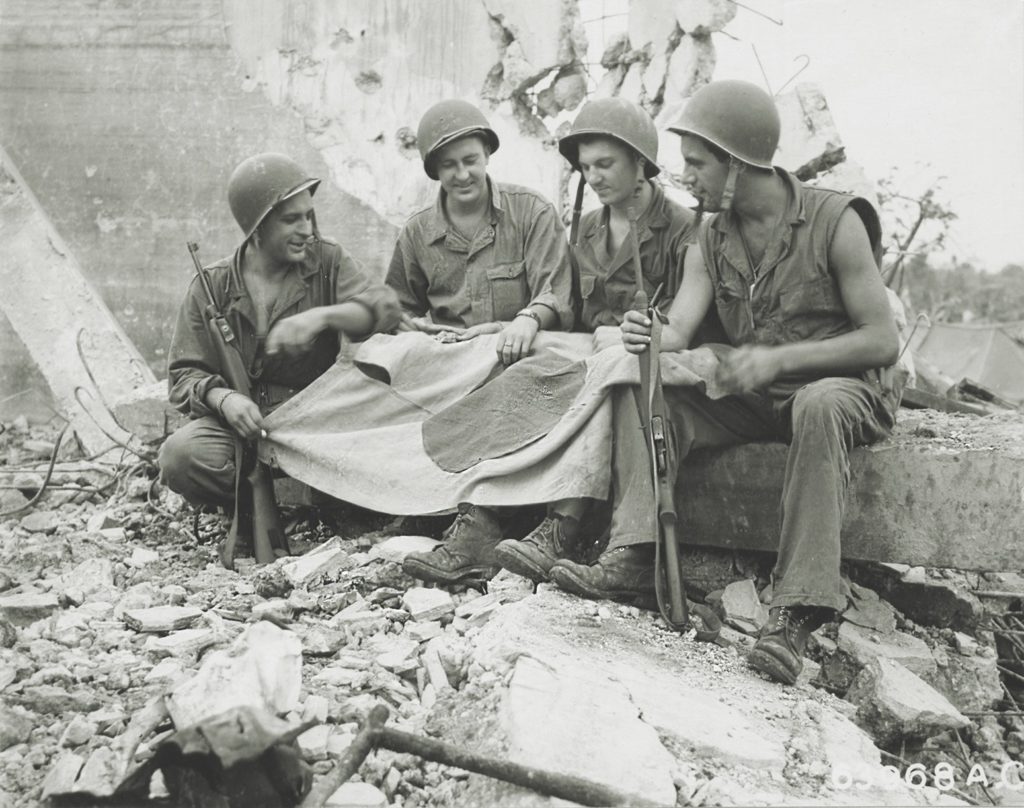
On the evening of October 19-20, Major Goto collected his few remaining survivors and attempted to slip through the American lines to the shore, where he hoped to build a raft that might get them to an island controlled by friendly forces. All were either killed or captured. Goto was killed by a burst of machine gun bullets fired by Private Joe Abreu. The rounds disintegrated the major’s fingers and peppered his torso. Abreu did not know the identity of his victim until he saw the body in the morning light.
On the corpse, Abreu and his buddies found sketches of the area, good luck charms, a farewell note from Goto’s wife, photographs, a pocket notebook, and a saber—the latter by far the most prized item. As the trigger puller, Abreu had dibs on the sword. When Abreu’s battalion commander offered him one thousand dollars for it, the machine gunner replied unambiguously, “Sir, this sword is not for sale and it never will be.”
THE AMERICANS snuffed out the last resistance three days after Goto’s death. The major and his men had more than done their job of costing the Americans time and lives. Only 45 Japanese survived to become prisoners of war. In the course of the battle, the Wildcats counted 1,338 enemy dead. In exchange, the 81st Division lost 264 men killed and 1,355 wounded. The 322nd Infantry suffered about 80 percent of the battle casualties—most of which were incurred during the mopping up phase. Even soldiers not hit by enemy fire on Angaur became casualties; the 81st Division lost 244 men to combat fatigue and another 696 to sickness. Of the total 2,559 American casualties on Angaur, about 54 percent eventually returned to duty. The rest could never fight again.
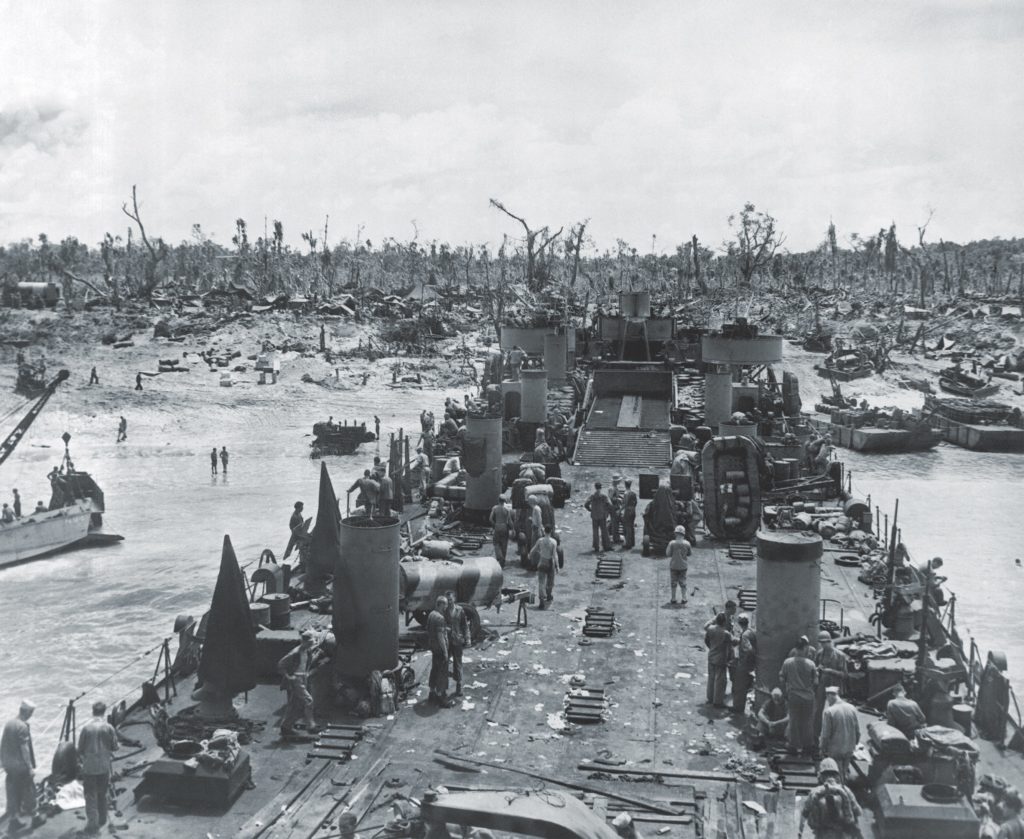
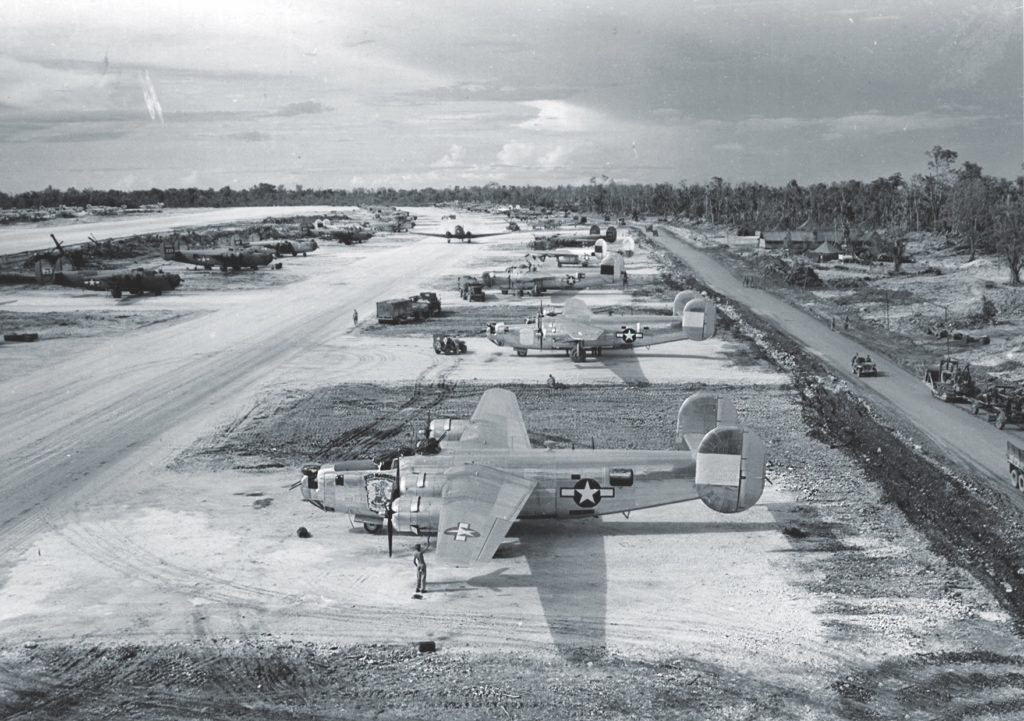
These experiences should have served as a cautionary tale that going after marginalized enemy soldiers in remote, defensible areas was self-defeating. But few American commanders took this lesson to heart. The mop-ups continued for the rest of the war at many spots, including on Peleliu, where two of Mueller’s regiments joined the Marines in late September. It took them two full months of bitter fighting to finish off the Japanese. As a strategic objective, Angaur proved small compensation for the 81st Division’s losses. By October 19 the aviation engineers had completed a pair of 6,000-foot runways that proved modestly useful as a minor B-24 base for the 494th Bomb Group. Otherwise, American control of Angaur had little impact on the war. ✯

